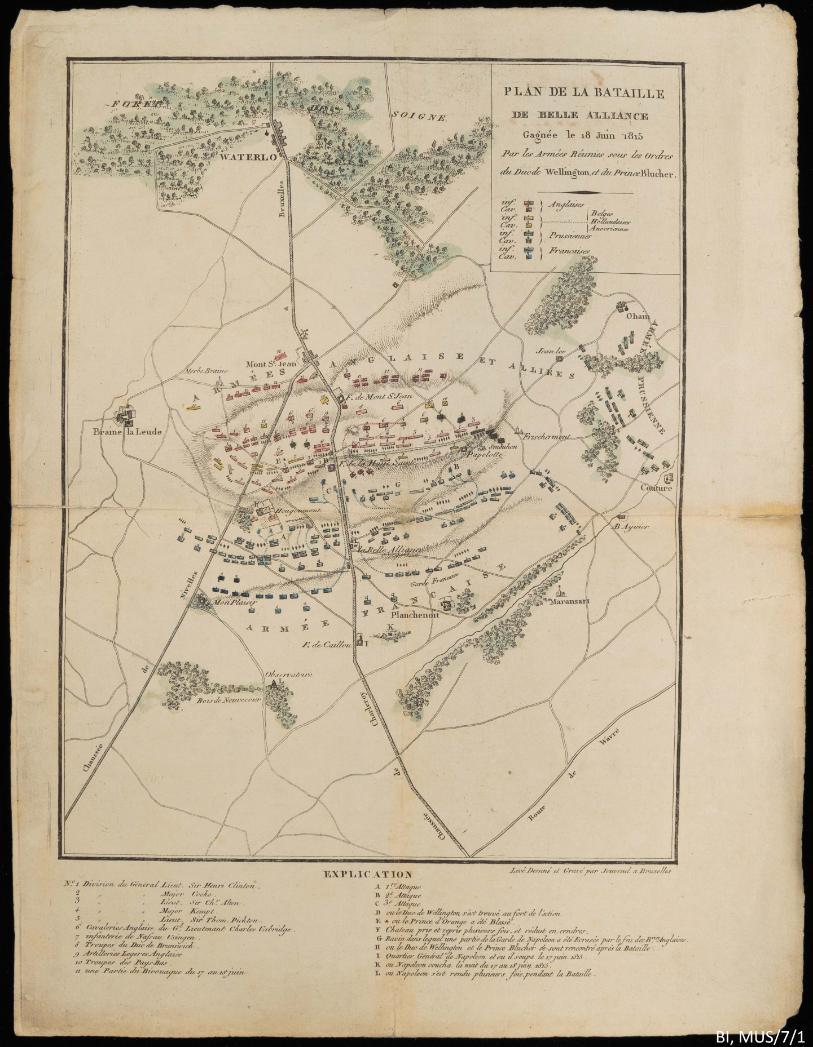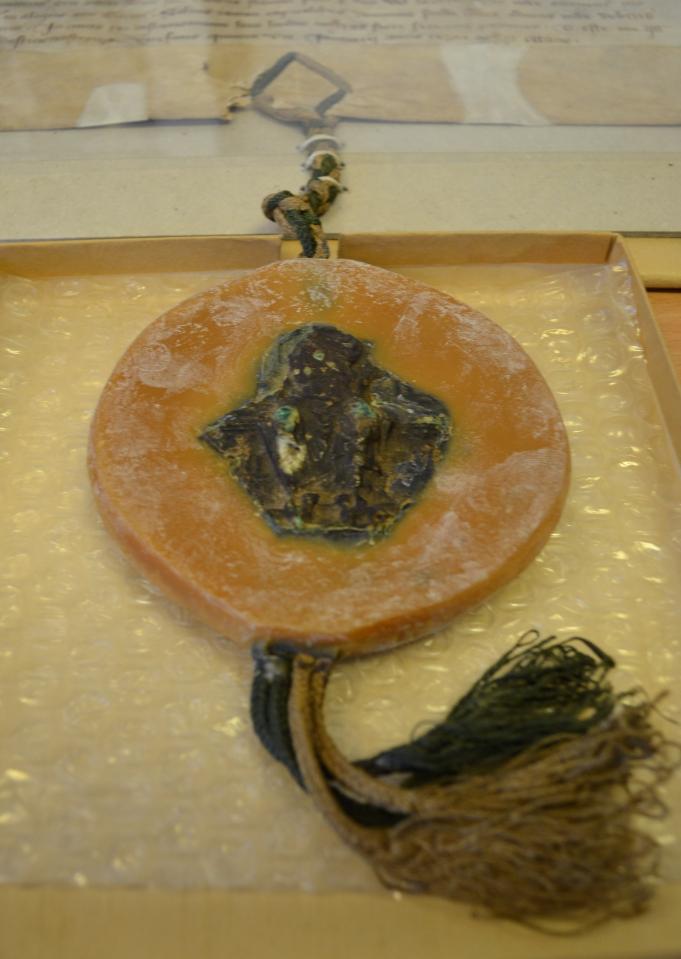Borthwick Newsletter - May 2023
Posted on 28 April 2023
May in the Archives - delve into our catalogues with this month’s featured description
Richard Rowntree, Earnseat School, to Arnold and May Rowntree: Saw Mr Dow preach; Arnside to get electricity from Carnforth; cricket; Miss Bedington has strained her ankle and has to go about in her mother's bathchair, 27 May 1933 [Rowntree Family Papers, RFAM/RSR/PD/1/1/2/47]
What’s new?
If you’ve visited us over the past month you may have had something of a noisy trip, thanks to some ongoing repairs to the roof, as mentioned in our last newsletter. We’re pleased to say the work is now complete, so we can all look forward to a somewhat quieter May. The repair work, along with the upgrades to our mobile shelving last year, are a disruptive but necessary part of keeping our archive service up to date and safe for staff, visitors, and, of course, the records we look after. The Borthwick is well equipped to deal with pests, floods and fire, but we do our best to avoid all three!
Roof work aside, April has been a typically busy month for us, with our Searchroom Team answering some 450 enquiries by post, phone, email and in person. We welcomed students from the English department, as well as postgraduate students from across all disciplines to the archives to get some hands-on experience with original records. We’ve also completed two new archive catalogues, as well as adding descriptions for some of our previously unlisted Rowntree correspondence and catching up on some accessioning. Outside the Borthwick our Access and Engagement Archivist gave a talk on the archive of The Retreat hospital, and the Friends of York Art Gallery visited for a tour of the campus sculpture trail with our University Art Curator.
New Accessions
Number of archival descriptions on Borthcat on 1st May 2023: 123,006
In April we added four photographs to our University of York Student Life Collection. While small in number, the photographs are rich in context, capturing the university and its surroundings in the 1960s, its first decade of existence. The deposit includes photographs of the Heslington Hall Football Team, the Charles pub in Heslington village (well known to students then and now), and a photograph of York’s University Challenge team. The Student Life Collection is a constantly evolving one, and our University Archivist is always interested in hearing from university alumni with materials relating to their time at York, particularly the many student societies that have been active on and off campus over its 70 year history. You can read more about the collection on the university website.
New Catalogues
In April we added full catalogues for the parishes of Selby and Skirpenbeck. Interestingly, both parishes share a connection to a Yorkshire abbey. Selby belonged to Selby Abbey until the Dissolution of the Monasteries in the sixteenth century. In 1618 the existing parish church was exchanged for the much grander Selby Abbey church and this remains the heart of the parish today, thus preserving one of few surviving abbey churches of the medieval period. The parish of Skirpenbeck in turn fell under the jurisdiction of Whitby Abbey until the sixteenth century when it passed to the Crown. Sadly, nothing of Skirpenbeck’s pre-dissolution history has survived in the parish archive, but Selby boasts a single early property record, dated to 1315, and made out to the Abbey and Convent of Selby, which includes a fragment of the Great Seal of England.
Another new addition is the archive of Reverend William ‘Bill’ Pickering. Pickering has a number of interesting connections to our archives. He was a student at Kelham Theological College, the training college of the Society of the Sacred Mission; vicar of Fulford in York from 1948 until his death in 1968, and chaplain to Fulford Hospital and Naburn Hospital, and we hold the archives for all of these here at the Borthwick. This web of connections is also apparent in another of our recent updates, the letters of Quaker confectioner and philanthropist Joseph Rowntree. Although Joseph’s correspondence has already been listed at a series level, that is by the correspondent and the total number of letters, we are now starting to add descriptions of individual letters. You can now find descriptions of letters to Joseph from his father and from his brother Henry Isaac. Henry’s letters are especially vivid, offering an intriguing glimpse of the raucous 1857 General Election in York. When a particularly unpopular candidate tried to address a crowd, Henry writes that the crowd ‘first hooted him, and then sang ‘Rule Britannia’ and drowned his voice’ and later proceeded to smash the windows of his hotel and pelt the police with stones. The unrest in York fills several letters, with Henry apologising for having little home news because ‘the election swallows all.’
Borthwick Out and About
Our Digital Access and Engagement Archivist Laura Yeoman was out and about in April, giving a talk on The Retreat Archive to the Quaker Family History Society. The Retreat was founded by and for the Society of Friends, or Quakers, in the 1790s, although it went on to treat people of all faiths and backgrounds. A pioneering psychiatric hospital, we are always pleased to direct people to its online catalogue which links to complete colour scans of the entire archive up to the 1910s, a project made possible by the Wellcome Trust. The archive contains a wealth of information about the staff, patients, and buildings over more than 200 years, and is a fascinating free resource.
Archive of the Month: The Musgrave Papers
What is it? The records of the family of Thomas Musgrave, a 19th century Archbishop of York
Where can I find it? The collection is listed on our online catalogue Borthcat.
Why is it Archive of the Month?
It would be easy to see the name of Thomas Musgrave, Archbishop of York, and assume this single box of papers was simply one of our ‘church’ archives. But in doing so you’d miss out on some surprising treasures! Whilst the small archive does include printed and handwritten items relating to the church careers of Thomas and his son Vernon, it is Thomas’ life before holy orders that stands out. Namely, the two diaries and a printed map that he brought home from his Grand Tour in 1815 which record his experiences of the aftermath of the famous Battle of Waterloo. In the days before the battle, 27 year old Thomas had been staying some nine miles away in Brussels, but like many visitors he travelled quickly to Antwerp, writing that Brussels was not a city that could be fortified against attack. ‘Such confusion and terror I never witnessed’ he writes of the journey and his arrival, with so many hurrying to Antwerp that there was scarcely a bed to be had in the city.

From there he, like many others, followed the progress of the battle, recording all he heard and saw in his diary, and writing emotionally of the arrival of the wounded soldiers afterwards, some moving with the help of crutches and others borne on the shoulders of their fellow soldiers. The battle marked the end of the Napoleonic Wars and the final defeat of the French army led by Napoleon Bonaparte. When he eventually returned to Brussels in September, Thomas and his companions visited the site of the battlefield with a guide, and we not only have his detailed description of the tour, but also the souvenir map of the battle he purchased, with his inscription: ‘Field of Waterloo. Wed. Sep. 20 1815. T.M.’ Thomas’ diaries and map, few as they are, leave us a vivid eyewitness account of the chaos and turmoil, as well as the monetary opportunities, engendered by perhaps the most famous battle of the age.
That's all for this month, we'll be back in June!


